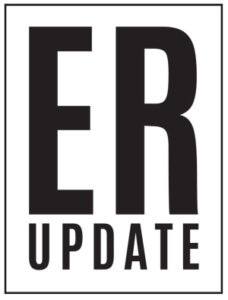The QHA has received an increased number of calls regarding employees who are not attending work while isolating (also referred to as ‘quarantine’) awaiting the outcome of a COVID-19 test. Below, we answer your common quarantine questions.
When is an Employee required to Quarantine?
Per the QHA Update that was distributed to members on 31 December 2021, on 30 December 2021, National Cabinet met and reached agreement on consistent nation-wide definitions and associated self-isolation requirements for individuals who have come in contact with a confirmed case of COVID-19. These were initially formalised in a public health direction that took effect from 12:00am Friday, 31 December 2021, which has subsequently been replaced twice. The Isolation for Diagnosed Cases of COVID-19 and Management of Close Contacts Direction (No. 3) (‘the Close Contacts Direction’), took effect from 9:30 am, 10 January, 2022 and provides as follows:
Close Contact:
- A close contact is now defined as someone who has spent more than 4 hours with a confirmed case in a household, accommodation or care facility (unless deemed otherwise by an authorised health officer).
- Symptomatic and Asymptomatic close contacts will need to quarantine for 7 days from the date of exposure; quarantine can be ended once seven days have passed since exposure, provided a Rapid Antigen Test taken on Day 6 returns a negative result.
Casual/ Low Risk Contact
- Individuals who have potentially been exposed to a confirmed case of COVID-19 but are not defined as close contacts do not have to immediately quarantine or be tested, however must monitor symptoms and get tested if symptoms occur.
- Venue staff who may have been exposed to a confirmed COVID-19 case but are asymptomatic, for example, will not be considered close contacts per the above definition and can therefore continue working without immediate testing or quarantine.
Further information about current contact and related quarantine requirements is available on the Queensland Health website and can be accessed by clicking here.
To access a copy of the current Close Contacts Direction, click here.
NOTE: Where an employee informs their employer that they are getting tested, employers are recommended to instruct employees to inform them of their results as soon as they receive them. Giving a clear instruction will assist employers if an employee fails to keep the employer updated, which may delay their return to work.
What kinds of Leave are available to an Employee required to Quarantine?
Personal/ Carers’ Leave
Section 97 of the Fair Work Act 2009 (‘FW Act’) provides that a full or part-time employee can access paid personal/carers’ leave either:
- because they are unfit for work due to personal illness or injury, or;
- to provide care or support to a member of their immediate family or household, who requires care or support because of a personal illness or injury or an unexpected emergency affecting that person.
As such, an employee who is in quarantine awaiting the outcome of a COVID-19 test cannot take personal/carers’ leave unless they are sick. Where this is the case, the employee must provide appropriate evidence (i.e. a medical certificate or statutory declaration) if requested to do so by their employer.
Annual Leave
An employee who is not unwell but cannot attend pending the outcome of a COVID-19 test may apply to access some of their accrued annual leave should they wish to be paid for the isolation period. An employer can only reasonably refuse such an application based on the operational requirements of the business. Given this, it is important to consider that as they are in quarantine, the employee would not have been able to attend work regardless of whether they were on annual leave or not.
Unpaid Pandemic Leave
Schedule X was first inserted into the Hospitality Industry (General) Award 2020 (‘HIGA’) (and a large number of other modern awards) in March 2020, in response to the COVID-19 pandemic. It provides for up to two weeks of unpaid pandemic leave for an employee who:
- Is required by government, or medical authorities, or on the advice of a medical practitioner, to self-isolate, and as a result was unable to work, or;
- Is otherwise prevented from working by measures taken by government or medical authorities in response to the COVID-19 pandemic.
Unpaid pandemic leave counts as service for the purposes of entitlements under the applicable modern award and the National Employment Standards; as such, annual and personal/carers’ leave continue to accrue on any period of unpaid pandemic leave. Additionally, an employee taking unpaid pandemic leave as per Schedule X is recognised as having the benefit to workplace right, as per the general protections sections of the FW Act.
An employee must:
- Give their employer notice of the taking of unpaid pandemic leave and their reason for requiring it as soon as practicable (which may be a time after the leave has started), and;
- If requested to do so, give the employer evidence that would satisfy a reasonable person that the leave is being taken for one of the purposes prescribed above.
Authorised Unpaid Leave
An employee may need to take authorised unpaid leave for the duration of their isolation period if they:
- Are award/ agreement free OR covered by a registered agreement (such as a Collective or Enterprise Agreement) or modern award that does not provide an entitlement similar to unpaid pandemic leave, AND
- Cannot take another form of paid leave as addressed above.
While authorised unpaid leave does not break an employee’s period of continuous service, it does not count toward it and consequently does not attract further personal/carers’ or annual leave entitlements.
Further Information
QHA members seeking more information or wishing to discuss a specific employment relations matter are encouraged to contact the Employment Relations Department for a confidential discussion by calling 07 3221 6999 or emailing er@qha.org.au.

